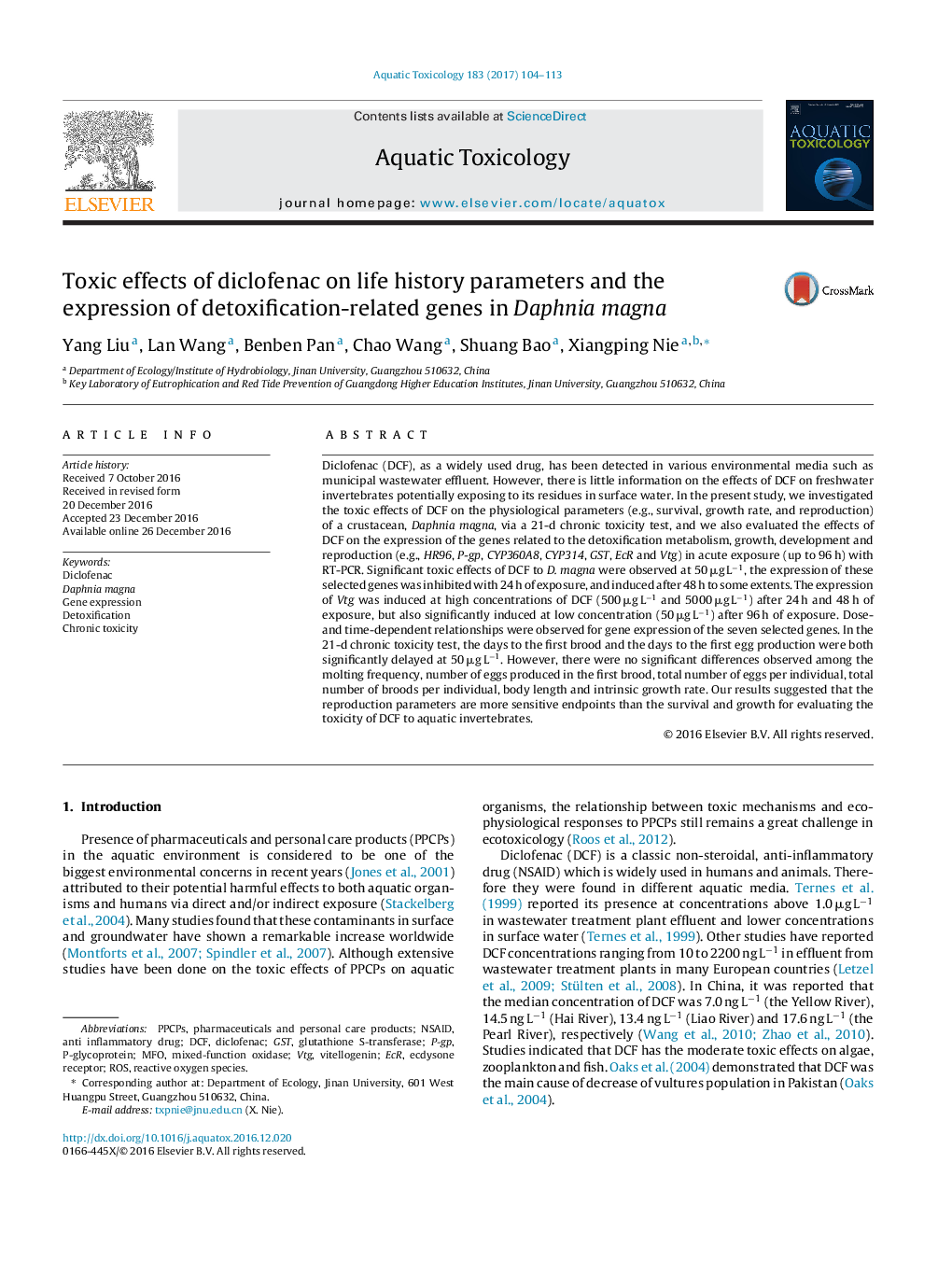| Article ID | Journal | Published Year | Pages | File Type |
|---|---|---|---|---|
| 5764206 | Aquatic Toxicology | 2017 | 10 Pages |
Abstract
Diclofenac (DCF), as a widely used drug, has been detected in various environmental media such as municipal wastewater effluent. However, there is little information on the effects of DCF on freshwater invertebrates potentially exposing to its residues in surface water. In the present study, we investigated the toxic effects of DCF on the physiological parameters (e.g., survival, growth rate, and reproduction) of a crustacean, Daphnia magna, via a 21-d chronic toxicity test, and we also evaluated the effects of DCF on the expression of the genes related to the detoxification metabolism, growth, development and reproduction (e.g., HR96, P-gp, CYP360A8, CYP314, GST, EcR and Vtg) in acute exposure (up to 96 h) with RT-PCR. Significant toxic effects of DCF to D. magna were observed at 50 μg Lâ1, the expression of these selected genes was inhibited with 24 h of exposure, and induced after 48 h to some extents. The expression of Vtg was induced at high concentrations of DCF (500 μg Lâ1 and 5000 μg Lâ1) after 24 h and 48 h of exposure, but also significantly induced at low concentration (50 μg Lâ1) after 96 h of exposure. Dose- and time-dependent relationships were observed for gene expression of the seven selected genes. In the 21-d chronic toxicity test, the days to the first brood and the days to the first egg production were both significantly delayed at 50 μg Lâ1. However, there were no significant differences observed among the molting frequency, number of eggs produced in the first brood, total number of eggs per individual, total number of broods per individual, body length and intrinsic growth rate. Our results suggested that the reproduction parameters are more sensitive endpoints than the survival and growth for evaluating the toxicity of DCF to aquatic invertebrates.
Keywords
Related Topics
Life Sciences
Agricultural and Biological Sciences
Aquatic Science
Authors
Yang Liu, Lan Wang, Benben Pan, Chao Wang, Shuang Bao, Xiangping Nie,
